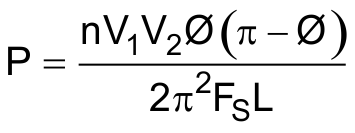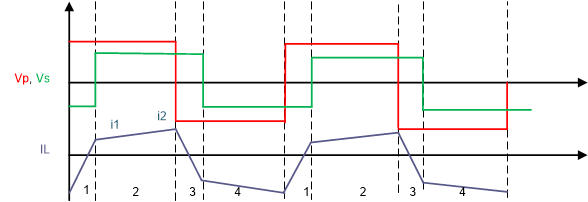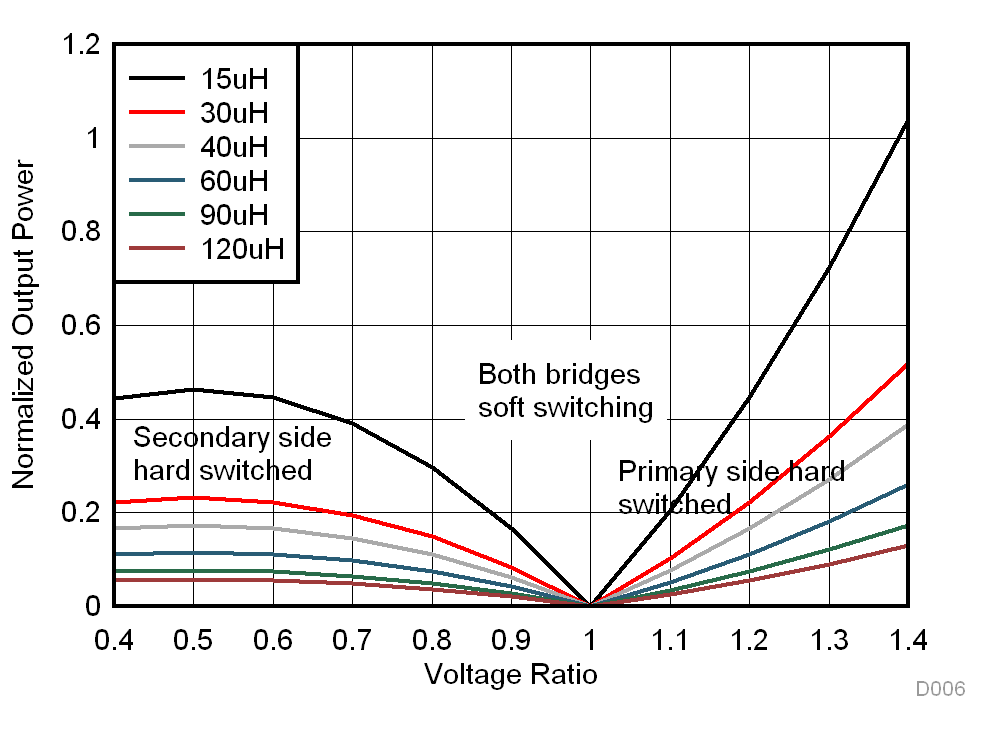JAJU732C June 2019 – July 2022
- 概要
- Resources
- 特長
- アプリケーション
- 5
- 1System Description
- 2System Overview
- 3Circuit Description
- 4Hardware, Software, Testing Requirements, and Test Results
- 5Design Files
- 6Related Documentation
- 7Terminology
- 8About the Author
- 9Revision History
2.3.4.1 Leakage Inductor
The most important design parameter is the selection of leakage inductor. The power transfer relation of the dual-active bridge is given by Equation 6.

Equation 6 shows that a low value of inductance will lead to high power transfer capability.
The maximum value of power transfer for a given switching frequency, leakage
inductor, and input and output voltage will occur at
Ø
= π/2.
Figure 2-15 shows the inductor current waveform. The value of current at points i1 and i2 can be derived from this waveform.
Where d is the voltage transfer ratio of the converter given in Equation 9 and Inom is the nominal base current of the converter.

 Figure 2-15 Inductor Current
Waveform
Figure 2-15 Inductor Current
WaveformFrom Equation 7 and Equation 8, the conditions for zero voltage switching for leading and lagging bridge of the converter can be obtained.
From the following conditions, the conditions for ZVS are obtained in terms of phase and voltage gain of the converter, summarized in Equation 10 and Equation 11 for the primary bridge and secondary bridges respectively.
- i1 > 0 for the secondary side bridge
- i2 > 0 for the primary side bridge


By combining Equation 7, Equation 8, Equation 10, and Equation 11, the relationship between output power and voltage ratio for different values of the inductor is obtained. A MATLAB® script used to plot this relationship is depicted in Figure 2-16. The figure shows that for a particular value of inductance, when the voltage transfer ratio changes from unity, the converter switches experience hard switching. As long as the voltage transfer ratio is kept at unity, soft switching across both the primary and secondary leg switches is obtained. The most important point to note is that the soft switching region (zero voltage switching) depends on the value of leakage inductance. As the value of inductance increases, the ability for soft switching of the converter extends up to very low power levels (light loads).
 Figure 2-16 ZVS Range and Output Power
Versus Voltage Transfer Ratio
Figure 2-16 ZVS Range and Output Power
Versus Voltage Transfer Ratio